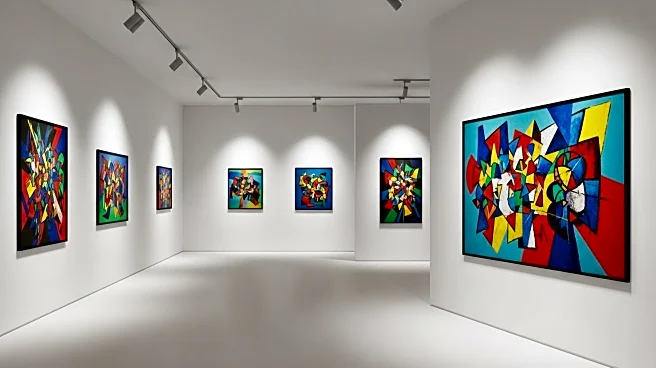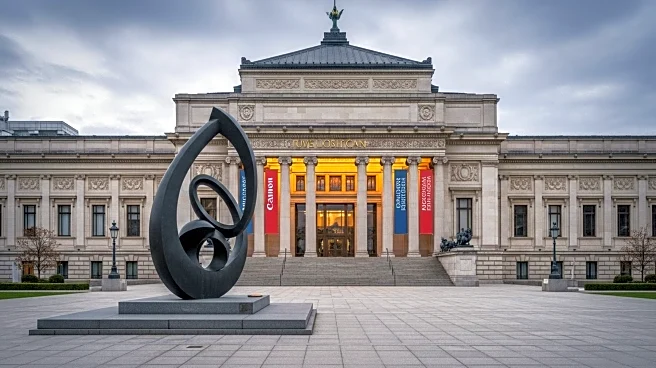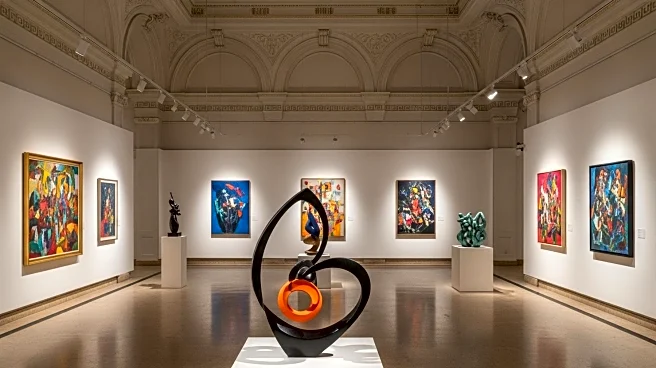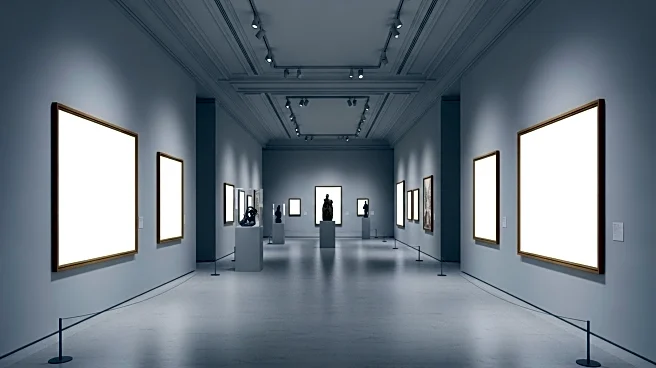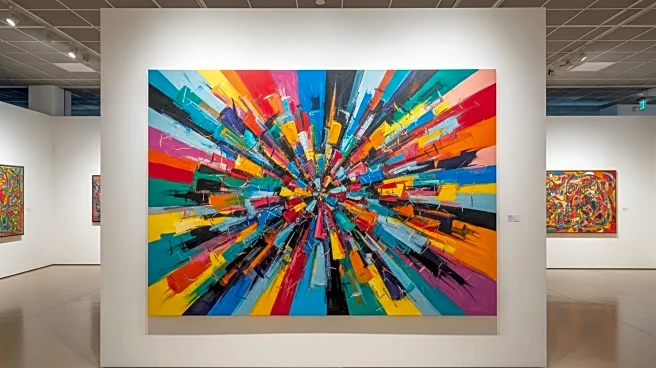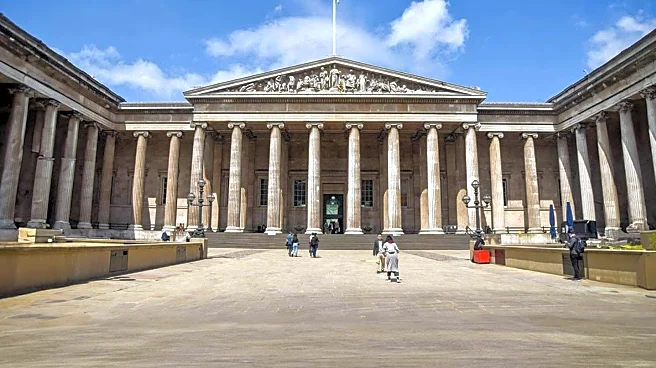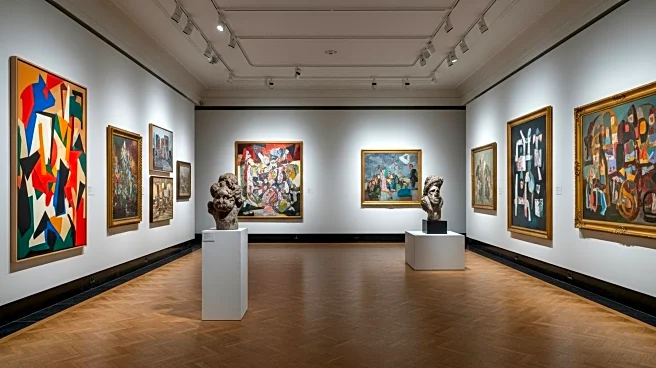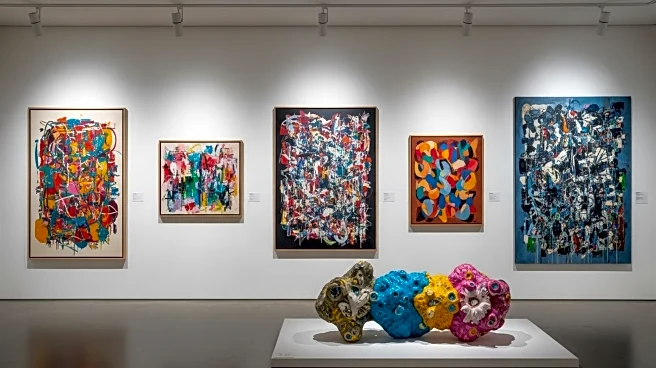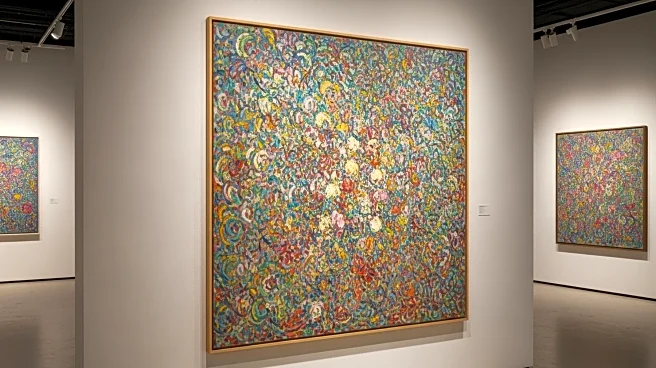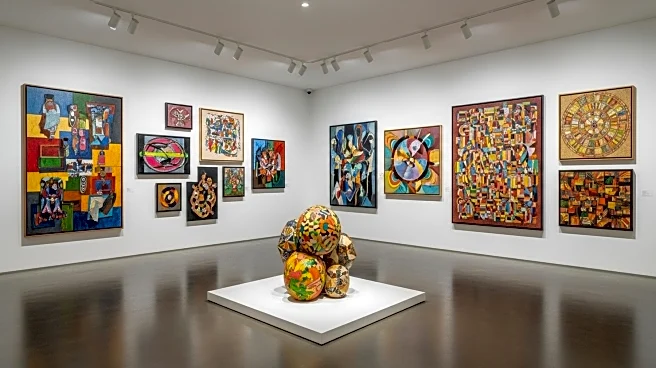What's Happening?
The National Gallery has announced the removal of its 1900 cut-off date, allowing it to include 20th-century paintings in its collection. This decision marks a significant shift in the gallery's approach to art curation, as it aims to capture the seismic shifts in painting that occurred during the 20th century. The gallery plans to build a new wing dedicated to these works, which will include pieces by women and artists of color. This move is expected to enhance the gallery's storytelling by providing a more comprehensive view of art history. The decision comes amid concerns about potential conflicts with the Tate, which also showcases 20th-century art. However, both institutions have formed a joint working group to collaborate on the national collection, ensuring a harmonious expansion.
Why It's Important?
The inclusion of 20th-century art in the National Gallery's collection is a pivotal development for art enthusiasts and historians. It allows for a more complete narrative of art history, highlighting the evolution of painting styles and techniques. This expansion is particularly significant for the representation of women and artists of color, who have historically been underrepresented in major art collections. By showcasing their work, the gallery can offer a more diverse and inclusive perspective on art. The collaboration with the Tate ensures that both institutions can coexist without conflict, benefiting the national art scene and providing visitors with a richer cultural experience.
What's Next?
The National Gallery's expansion will involve the construction of a new wing dedicated to 20th-century art. This development will require careful planning and collaboration with the Tate to avoid any potential disputes over art acquisitions. The joint working group will play a crucial role in determining the scope and focus of the new collection. As the gallery moves forward, it will need to make strategic decisions about which artists and works to include, balancing historical significance with contemporary relevance. The expansion presents an opportunity to redefine the gallery's identity and attract a broader audience.
Beyond the Headlines
The removal of the 1900 cut-off date opens up discussions about the political and cultural implications of art curation. The representation of the female nude, for example, has been a contentious issue, with many works historically depicting women through the male gaze. The gallery's expansion offers a chance to challenge these narratives and present a more balanced view of gender in art. Additionally, the inclusion of artists of color addresses long-standing issues of racial representation in art institutions. This shift could lead to broader changes in how art is curated and perceived, influencing future generations of artists and curators.
